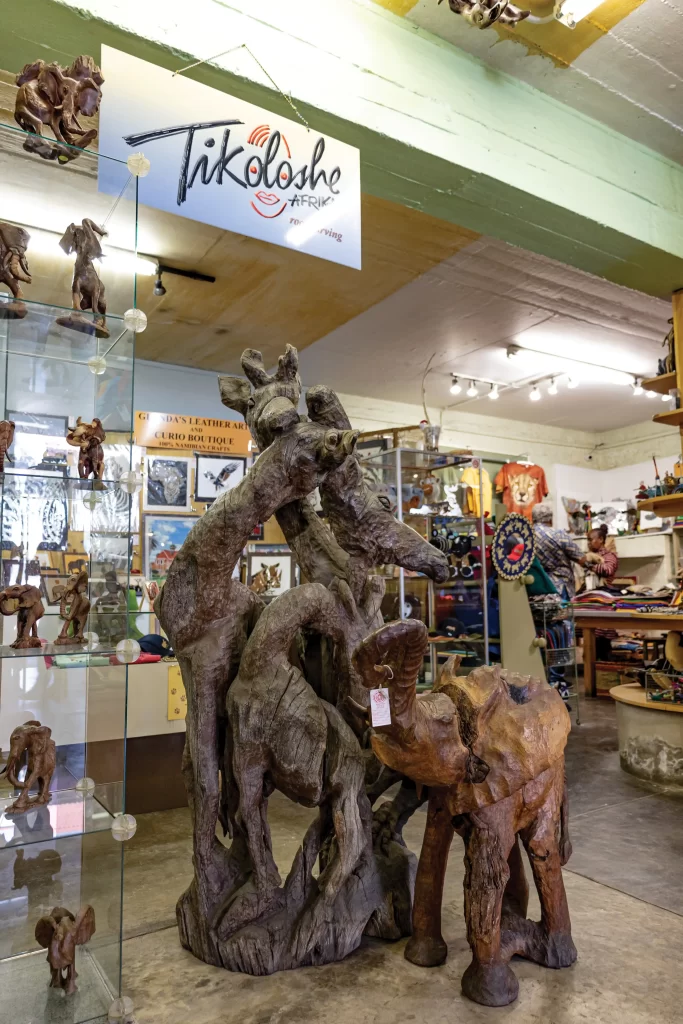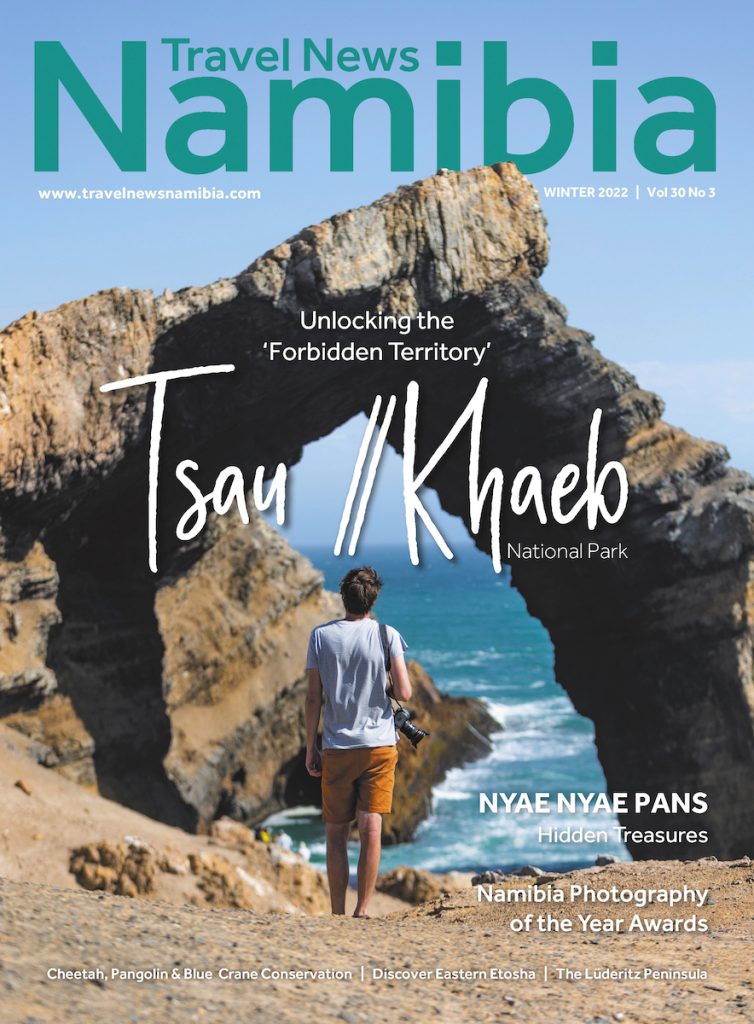

Hallowed Halls of the Namibia Craft Centre
Text & Photographs Charene Labuschangne
From the Winter 2022 issue
When I was little my mum serviced a couple of curio shops through the far corners of Namibia. I was lucky enough to occasionally travel with her to Damaraland, Sossusvlei and Etosha in a pearl white Toyota Rav filled with local crafts. She put my sister and me to work on stock takes, labelling and organising the curios and in exchange we got to go on game drives, sit by waterholes and read endless guidebooks. If she wasn’t on a trip, my mother would spend aeons at the Namibia Craft Centre sourcing and procuring crafts for her shops, after having picked up my sister and me from school. We spent afternoons on end frolicking through the stalls of small business entrepreneurs, drinking hot chocolate at the Craft Bistro, and inevitably perusing through the pretty products as an interest in fashion began manifesting.
Fast forward many years down the line, I still have a small orange beaded bag – barely big enough for my smartphone – which I claimed from the surplus stock after my mum closed her shops.
Namibian crafts – the gift to create, carve, string and construct in every medium imaginable – run through our country like a network of rivers and tributaries. Each one of our cultures and subcultures hold the key to their very own unique craft. Kavango and Caprivi are hotspots of wood carving. The nomadic Himba people don and design intricate and culturally significant jewellery. San people are masters of beadwork. Not to mention the hybrids and contemporary adaptations that have sprouted from our colourful mix and keen interest in repurposing materials. The Namibia Craft Centre is where all these tributaries converge, and crafters, artists and artisans have been doing business here since 1990.
There are about 40 small shops under their roof, which multiplies tenfold when you count in all of the crafters that supply the shops in the Craft Centre. Many of these stall owners have been showcasing Namibian crafts here since the very beginning, and their success stories are goosebump-inducing. After chatting to a few of the stall owners I noticed a trend – many of these individuals started out as salespeople for other shop owners, learning the tools of the trade, and eventually opening their very own shops in the Craft Centre. Since its inception, this space has been a home for locals and their small businesses to exchange knowledge not only of crafts, but also of good business.
On the premises of an old brewery, the centre boasts three floors of baskets, leather bags, beaded and wooden figurines, clothing, jewellery and the list goes on. The open-plan architecture gives an air of industrial simplicity. Concrete floors are coloured in with tables and shelves displaying the very best of Namibian crafts. The mezzanine floor houses an airy art gallery, as industrial-cool as the old cold room, which now houses a cosmetics range. It is no surprise that Kerry McNamara Architects won an award for the design. In the meantime, the Craft Bistro got a facelift. While the cakes and coffees are as delectable as ever (their cappuccinos are to die for), their couches are inviting and the menu filled with fresh and exciting dishes.
Under the management of the Omba Arts Trust, Namibia Craft Centre curates the offering of shops, developing craft skills and initiatives as well as equipping shop owners and artisans with the facilities they need to conduct their business. At least 80% of all the crafts sold here are locally made, the other 20% come from our neighbouring countries as well as Kenya and Ghana. Keeping it local has always been the objective of the Craft Centre and with so many thoughtfully hand-made crafts at our disposal in Namibia and surrounds, why would we need to look elsewhere? 95% of the Namibia Craft Centre’s shops support women projects and cooperatives, bringing pride back to the hands that create the majority of our crafts and emancipating many more generations in their wake.
Although strolling through the Craft Centre in Windhoek before your flight home is a great opportunity to stock up on souvenirs, it is not just for the tourist. Shereen, who has been general manager at the Namibia Craft Centre for 11 years, encourages locals to browse through their selection when on the hunt for the perfect gift or simply looking to add local flair to your home and wardrobe. The same can be said for corporate groups looking to give back to the local craft industry while gifting their clients. Imagine receiving a functional Namibian craft as a corporate gift, instead of some silly branded pen?
Walking through these hallowed halls in my twenties evokes the same nostalgia, pride and love for Namibian crafts as it did when I was small; only this time around I have my own budget to blow on baskets, bags, bowls and beads. Buying authentic, local, hand-crafted and made with love will never go out of fashion, which is why supporting the Namibia Craft Centre is just about the coolest, caring thing you could do. Long live our beautiful local crafts!





